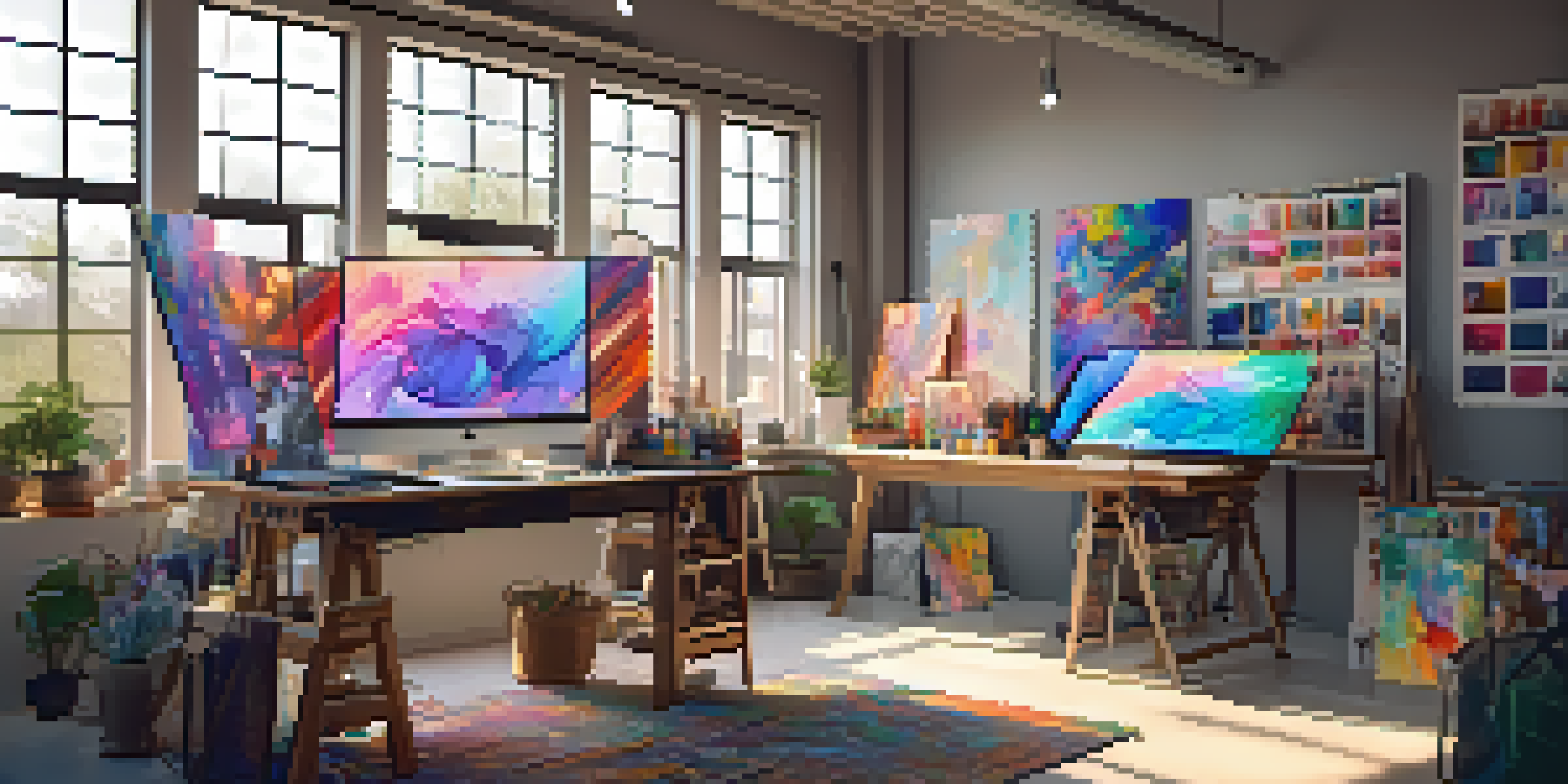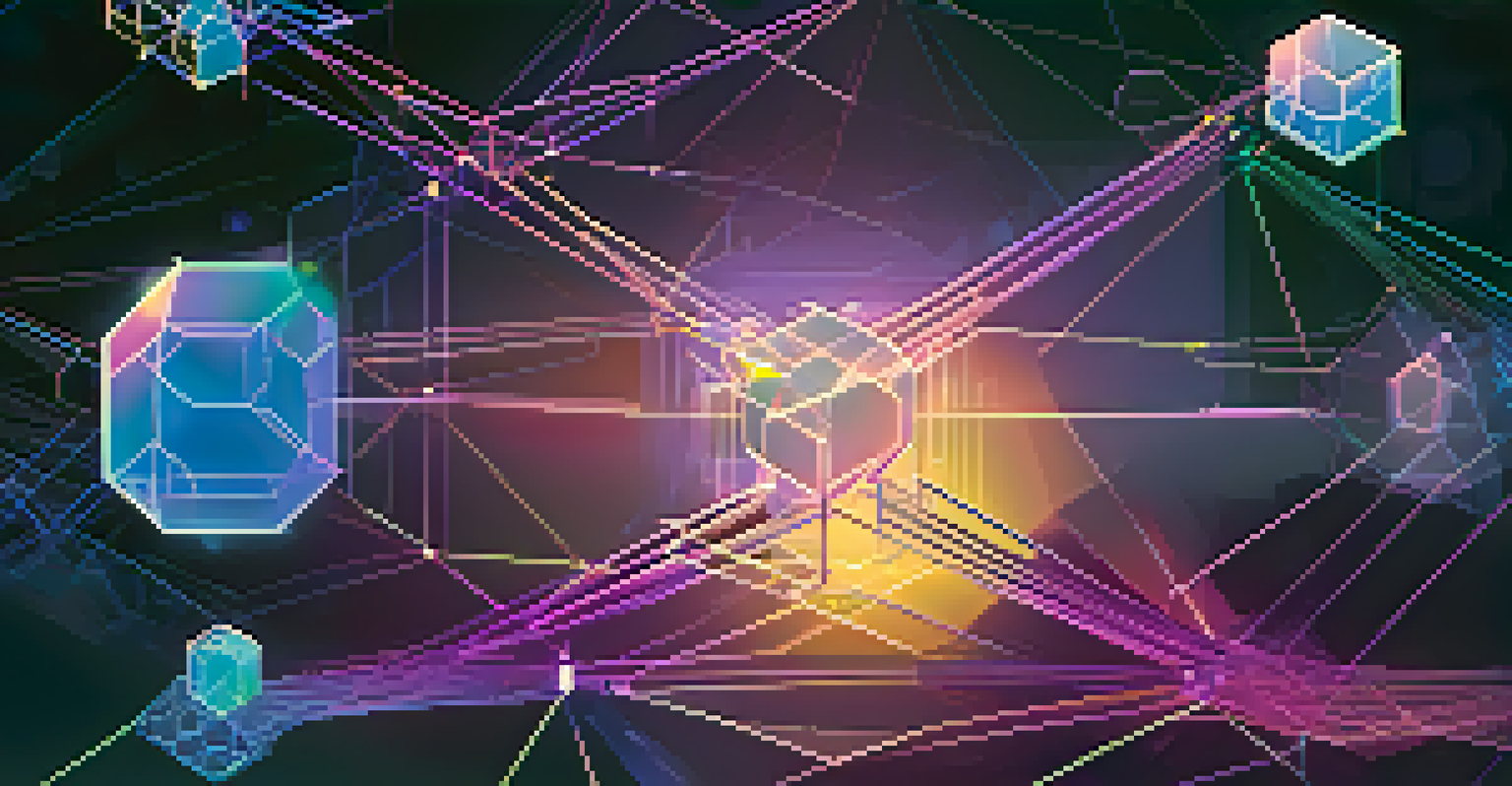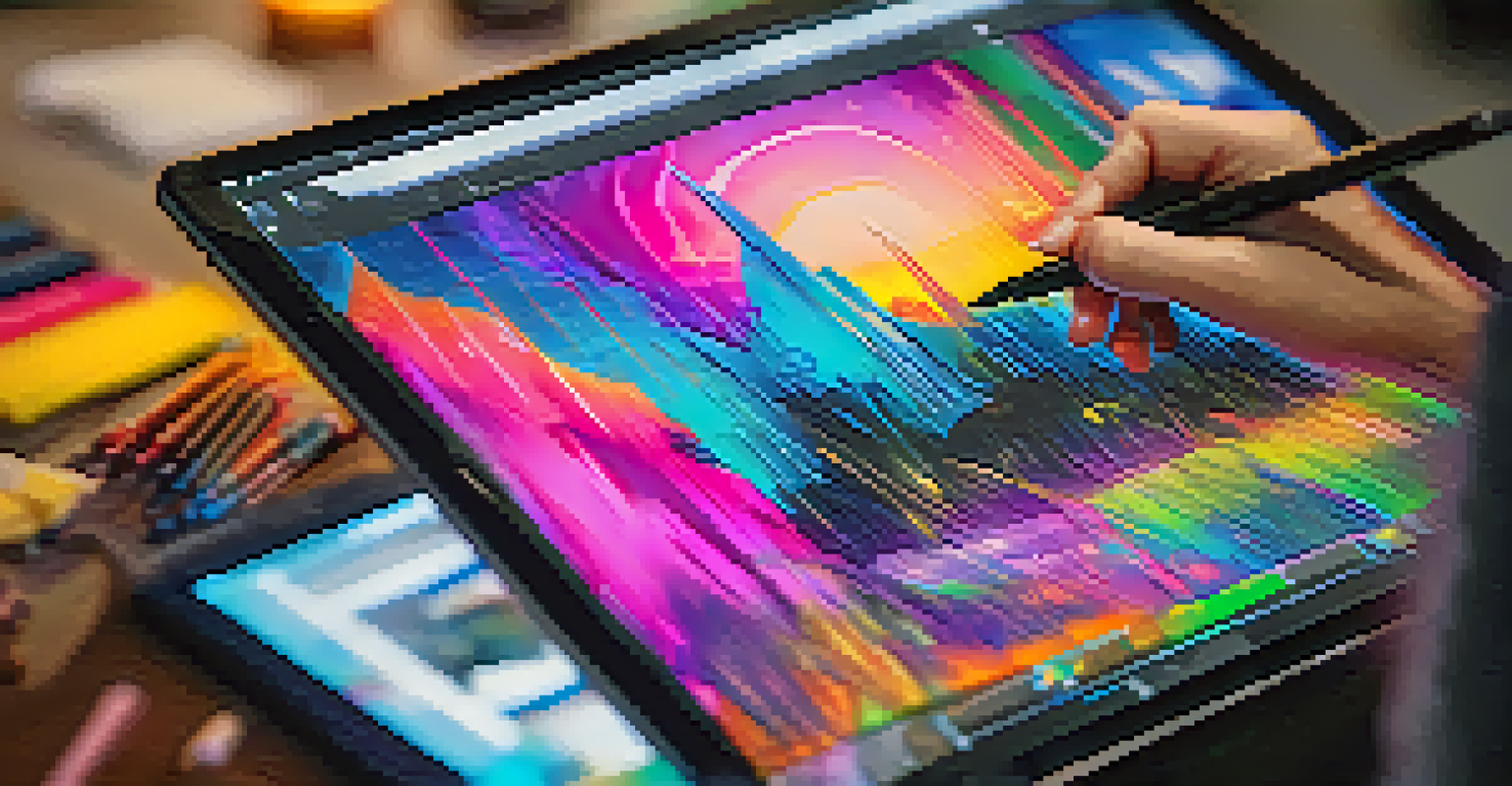Smart Contracts and NFTs: The Intersection of Technology and Art

Understanding Smart Contracts: The Basics
Smart contracts are self-executing contracts where the terms are directly written into code. Imagine them as virtual vending machines; once you fulfill the input requirements, the desired output is automatically delivered. This technology operates on blockchain, ensuring transparency and security, which is crucial for establishing trust in various transactions.
The future belongs to those who believe in the beauty of their dreams.
By eliminating the need for intermediaries, smart contracts streamline processes, reducing costs and time. This is particularly significant in the art world, where traditional practices often involve tedious verification and transaction procedures. With smart contracts, artists can focus more on their creativity rather than getting bogged down by administrative tasks.
Furthermore, smart contracts can also automate royalty payments. For instance, if an artwork is resold, the smart contract can instantly ensure that the original creator receives a predetermined percentage of that sale. This not only incentivizes artists but also helps them maintain a connection to their work as it evolves in the market.
NFTs: A New Canvas for Artists
Non-fungible tokens (NFTs) are digital assets that represent ownership of unique items, often in the form of art, music, or even tweets. Unlike cryptocurrencies, which are interchangeable, NFTs provide a unique identifier, making them perfect for artists looking to establish ownership and provenance. Think of NFTs as certificates of authenticity in the digital realm.

The rise of NFTs has opened up new avenues for artists to monetize their work. For example, a digital artist can sell an NFT of their artwork, allowing buyers to own a piece of digital art that can’t be replicated. This model not only generates income for creators but also creates a thriving community of collectors.
Smart Contracts Simplify Transactions
Smart contracts automate processes and eliminate intermediaries, making transactions more efficient and cost-effective for artists.
Moreover, NFTs can be programmed with certain features, such as royalties on future sales, providing artists with ongoing income as their work is resold. This innovative approach is reshaping the traditional art market, allowing artists more control over their creations and financial futures.
The Convergence of Smart Contracts and NFTs
The true magic happens when smart contracts and NFTs come together. By embedding smart contracts within NFTs, artists can automate various aspects of their sales and ownership transfers. This synergy ensures that every transaction is secure, transparent, and executed automatically, which is a game changer for the art community.
Innovation distinguishes between a leader and a follower.
For instance, when an NFT is sold, the smart contract can automatically handle the transfer of ownership and the distribution of funds. This means no delays or misunderstandings, as everything is programmed to execute according to the agreed terms. Artists can rest easy knowing that their work is safeguarded by technology.
Additionally, this combination allows for innovative features such as timed releases or limited editions, which can create excitement around an artist's work. By leveraging both smart contracts and NFTs, creators can engage their audience in new and meaningful ways, enhancing their artistic expression.
Challenges and Criticisms of NFTs
Despite their popularity, NFTs and smart contracts are not without their challenges. One major concern is the environmental impact of blockchain technology, particularly with energy-intensive processes involved in minting NFTs. Many are advocating for greener solutions, as the art community grapples with the balance between innovation and sustainability.
Another criticism centers around the accessibility of NFTs for emerging artists. The high gas fees for transactions on certain blockchains can deter new creators from entering the market. This raises questions about equity in the art world and whether NFTs are truly democratizing art or simply creating new barriers.
NFTs Empower Artists with Ownership
NFTs allow artists to establish ownership of unique digital assets, providing new revenue streams and control over their work.
Lastly, the volatility of the NFT market poses risks for artists and collectors alike. Prices can fluctuate dramatically, leading to uncertainty and potential financial loss. It's crucial for those involved in the NFT space to educate themselves and understand the market dynamics before diving in.
Artistic Expression in the Digital Age
The intersection of smart contracts and NFTs has transformed how artists express themselves and connect with their audience. Digital platforms allow for more experimentation, where artists can push boundaries and explore new mediums without the constraints of traditional galleries. This freedom fosters creativity and innovation in ways we've never seen before.
Moreover, artists can now reach a global audience without geographical limitations. With just a few clicks, a piece of digital art can be showcased and sold to collectors around the world. This accessibility not only broadens their market but also creates a diverse community of art lovers and fellow creators.
In a world where art can exist in multiple formats, the possibilities are endless. Artists can incorporate interactivity, animation, or even virtual reality into their works, offering immersive experiences that were previously unimaginable. This evolution in artistic expression is reshaping our understanding of what art can be.
The Future of Art: What Lies Ahead?
As technology continues to advance, the future of art seems promising. We can expect to see more artists embracing NFTs and smart contracts as part of their creative toolkit. This technological integration will likely lead to new forms of artistic expression that challenge traditional norms and encourage innovative storytelling.
Moreover, the potential for collaboration is vast. Artists can work together across borders, creating joint NFT projects or exhibitions that showcase multiple perspectives. This interconnectedness can foster a richer dialogue within the art community, blending different cultures and ideas into unique works.
Future of Art Embraces Technology
The convergence of smart contracts and NFTs is set to redefine artistic expression and collaboration in the digital age.
Finally, as the market matures, we may see more education and resources for artists to navigate this space effectively. Workshops, online courses, and community forums can empower creators to harness the full potential of smart contracts and NFTs, ensuring that the future of art is inclusive and vibrant for all.
Navigating the NFT Marketplace: Tips for Artists
For artists looking to dive into the NFT marketplace, understanding the landscape is crucial. Begin by researching various platforms where NFTs can be minted and sold, such as OpenSea, Rarible, or Foundation. Each platform has its unique features, fees, and community, so choose one that aligns with your artistic vision and goals.
Next, consider the importance of building a personal brand. Just like in traditional art markets, having an online presence can help you connect with potential buyers and collectors. Utilize social media, engage with your audience, and showcase your artistic journey to foster a loyal following.

Finally, always be mindful of the quality of your work and the story behind it. The NFT market thrives on authenticity and creativity, so focus on creating pieces that resonate with your audience. By combining technology with your unique artistic expression, you can carve out a niche in this exciting new space.